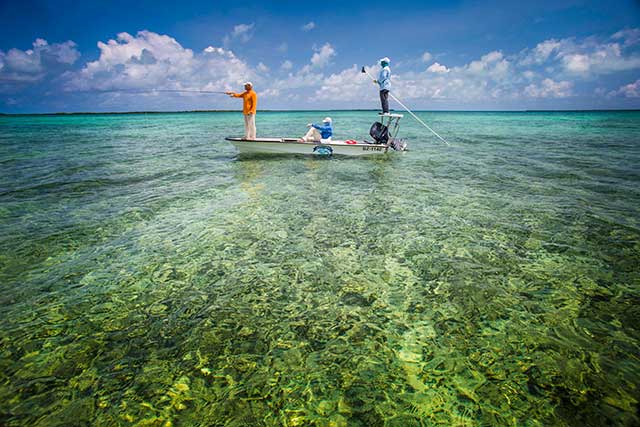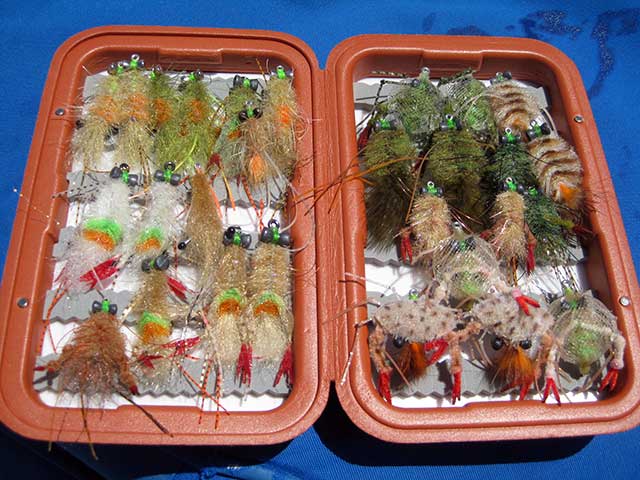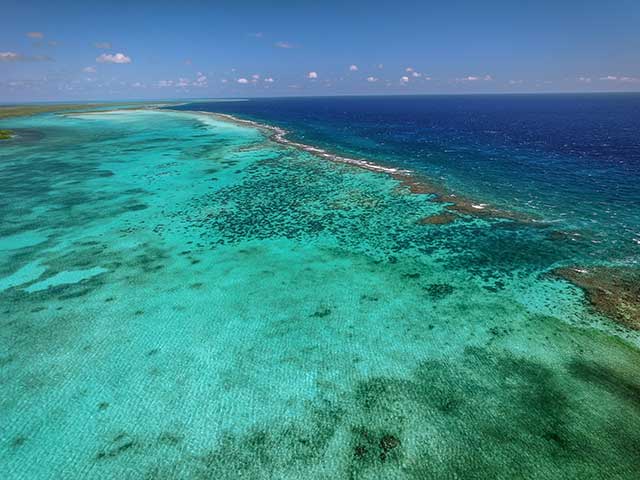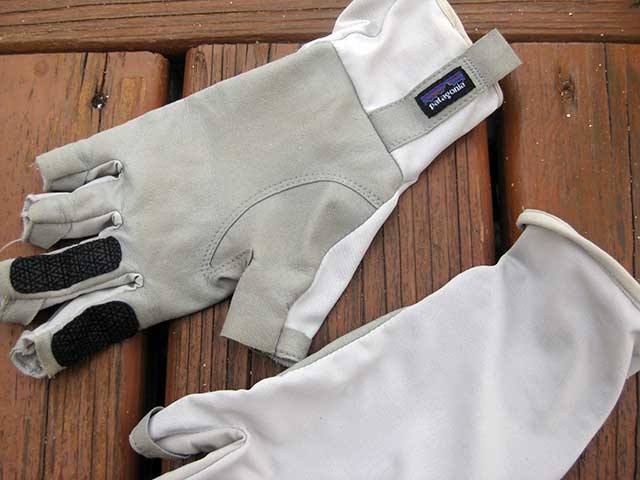Patience, Focus, Persistence: A Report from Turneffe Flats

The fishing opportunities at Turneffe range from the average 3-5-pound bonefish (with some larger) to permit that can be significantly larger than at many Central American destinations. Tarpon are available seasonally as well.
The moment I decided to commit to a permit-specific trip, I began to wonder about everything I heard and read about the fish: those who have logged considerable “permit hours,” and how they’ve all pointed out to expect the unexpected. If there’s a species that will not conform to a behavioral pattern, this is the one.
Turneffe Flats Lodge is located on the Turneffe Atoll (a shallow lagoon that rises up from the middle of the ocean), 30 miles off the coast of Belize. I booked a one-week stay. Nick, the booking manager, offered “We’ve had numerous clients catch and release their first permit at TF Lodge.” Encouraging words….
Turneffe is the largest of only four coral atolls in the Western Hemisphere. Approximately 30 miles long and 10 miles wide, it is made up of a fringing coral reef extending around the entire atoll, miles of back reef flats, mangroves, turtle grass beds, littoral forest, channels and large central lagoons.

The cabins at Turneffe front one of the most picturesque beaches and reef lines on the planet.
Packing: I opted for the kitchen sink approach. I might not be the most experienced permit stalker, but I’d have all the necessary gear. There are numerous articles on what constitutes a proper permit kit, but there’s little consensus on flies, sometimes even at the local level, so I picked a safe route and asked Enrico Puglisi (of EP Flies) to put together a Turneffe flats selection – masterfully tied crab and shrimp patterns, all based on premium-quality, sharp, strong, permit-ready hooks. As for the patterns themselves, my guide for the week, Dubbs (30+ years guiding experience), mentioned that there aren’t many fly designers committed to this level of fish deception.

Think variety and a range of sizes when you selecting flies for your trip. The secret sauce sometimes only reveals itself with experimentation.
Guides generally have an easy-going manner, but are obsessive about approach, and while stealth is their mantra, they all add their own unique and subtle stalking strategies to your fishing day. Each one brings to the table a lifetime of learning, so even after you’ve spent dozens of hours discussing their permit-stalking craft, you’ve barely begun to scratch the surface. At the start of day one I let presumptuousness reign and blurted out that all I really wanted to do was land one permit. Dubbs offered a polite, “OK, that goes at the top of our list.” Fair enough.
Stalking takes not only patience but intense focus, and I relied heavily on Dubbs for that focus. Over the course of the week, he keyed in on several pairs and single permit, and I got a fair shot at them. My first two attempts resulted in less-than-optimal casts due to nervous anticipation. I spooked the fish. Dubbs, who also fills in as coach, offered “You’ve got to pull it all together, man!” And I did. Subsequent attempts were clean, precise casts. I achieved a total of six solid follows: permit who glanced at my fly and thought it interesting enough to swim after for several feet – right before suddenly turning away. Heartbreaking. It’s worth noting that these six follows occurred over the course of an entire week, and every day that I achieved a follow was considered a good day by Dubbs. I can’t say that I agreed with this assessment on day one, but as the week progressed, I learned to accept that he was right. “That’s all you can do: put it in front of them and hope they track your fly.” Thank you Dubbs, for saying that out loud, on more than one occasion. Words that truly needed to be heard.
I didn’t land a permit that week, but left the lodge satisfied. Fly fishing is all about learning the craft, and the best anyone can ask for is to continue adding to their knowledge.
Permit and bonefish are present in the atoll throughout the year. Non-ocean-side flats bonefish are often larger and take flies more readily than ocean-side fish, but they tend to be on the move and casting accuracy is crucial.
Other fish: I did land dozens of bonefish, a hefty barracuda, cubera snapper and several jack species. I also cast to some strikingly beautiful, plump parrotfish, triggerfish and boxfish.

Craig and Karen Hayes, the owners of Turneffe Flats Lodge, have played a key role in improving Belize’s sports fish conservation programs.
Some anglers give Belize a bad rap for its bonefish, complaining about their size, but I landed several in the 5-pound range, and saw several more that easily eclipsed that. And as mentioned those on the inner flats and lagoons are not as numerous but, on average, are larger due to more available food sources. The bonefish in Belize are getting bigger – not that anyone ought to complain about a 5-pound bonefish to begin with.
A note about effective Turneffe atoll bonefish flies: the most productive ones are smaller, quick-sinking, light brown shrimp and crab patterns that incorporated a bright orange tuft, like an egg sac.
TF Lodge owners Craig and Karen Hayes have, over the course of 30+ years, created a sustainable lodge in idyllic surroundings. They strike the fine balance between providing guests with an optimum overall experience and being mindful of the of the atoll’s natural resources. Guides, skiffs, rooms, meals and amenities all fall into the A+ category, and, quite impressively, some of the best flats are located just minutes from the resort: less time travelling to fishing grounds equals more time fishing – something the lodge doesn’t trumpet quite as loudly as it should. One week flies by quickly. An experienced permit stalker told me, “That’s a very special place.” He’s entirely correct. See www.tflats.com for complete lodge and amenities descriptions plus seasonal packages.
If you’re a novice bonefish/permit angler, Craig Hayes gives an excellent 40-minute orientation prior to the start of day one, covering everything from equipment requirements to stalking procedures and interaction with the guides.
Recommended permit tackle: 8-9 weight rods (be sure to take along at least one spare rod). Saltwater reel holding a minimum of 200 yds. of 20 lb. backing. WF floating lines with ten-foot 16 to 20 lb. leaders are the standard. Firm-soled wading shoes for flats wading. If you’re a novice angler, the ocean side flats are firm bottomed and make for easier wading.

A must-have for any trip in the tropics: sun gloves.
Other items to have on hand: stripping gloves are an absolute essential, as are polarized sunglasses and hat/full face buff. Also, light-weight long-sleeve shirt and pants for sun protection, water bottle for flats wading, sunscreen, rain jacket, fly tying equipment, camera, and for some Cortaid (cortisone) for sunburn/insect bites.











